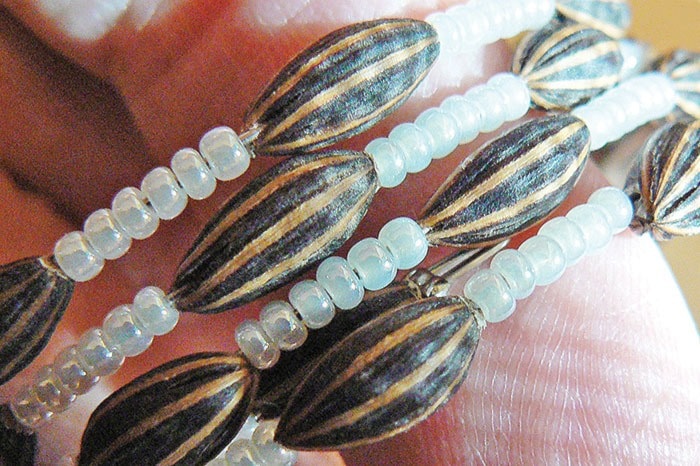“What is there to see on nature trails this month?”
Wildflowers have all but disappeared (some weedy species still muster on), the berry harvest is complete, while autumn leaves slowly begin their descent.
My best advice is: Look for seed pods and seeds. Everywhere a wildflower bloomed, a seed pod or berry is now in place. Some flowers bear their seeds within berries (false lily-of-the-valley), while other flowers (fawn lily) produce a pod with seeds inside.
In the case of silverberry (Elaeagnus commutata), a distinctive native plant also known as wolf willow or silverbush, the seed itself is arguably the most interesting feature.
A member of the Oleaster family, this shrub with fuzzy silver leaves and silver olive-like drupes is the source of big, beautiful ovoid seeds (up to 12 mm long) with dark and light stripes, once much sought-after by interior and prairie First Nations for use in seed jewelry.
Necklaces and bracelets made with seeds often included tiny white seed beads for contrast. The floury, tasteless silverberry fruit (at best, a famine food) was boiled to remove the flesh.
Before Europeans introduced glass trade beads to native groups, chokecherry seeds were also popular for jewelry, regalia and ornamentation. Silverberry grows south from Alaska and the Yukon, and is quite common in B.C. east of the Coast-Cascade Mountains.
Landscapers love this hardy deciduous perennial for its fragrant yellow flowers, silvery colour and deer-resistance. Silverberry provides excellent cover and food for birds and mammals.
Contact Christine by email at: wildernesswest@shaw.ca.
